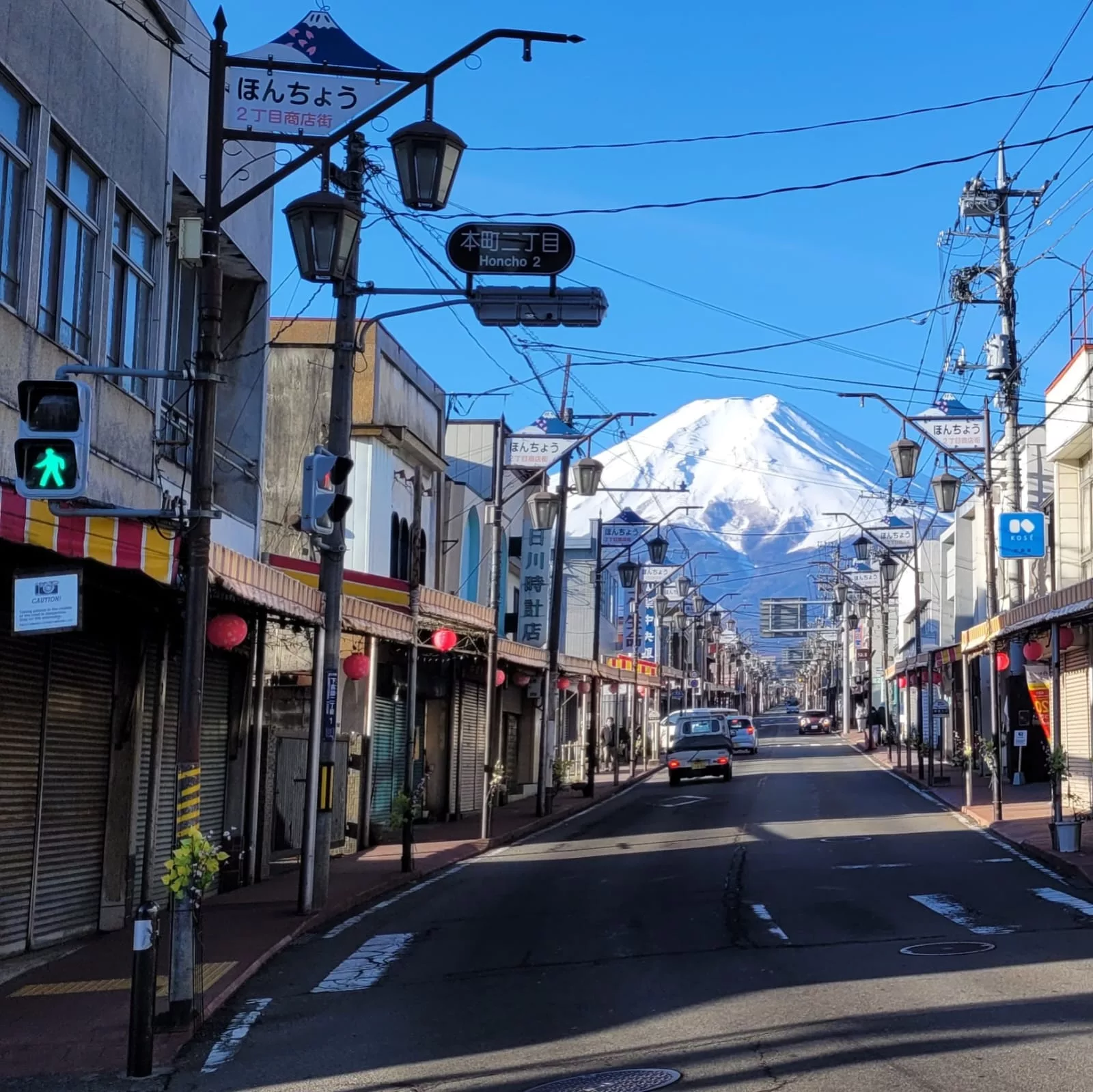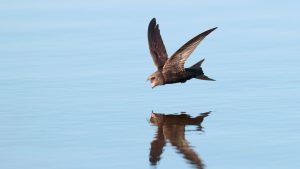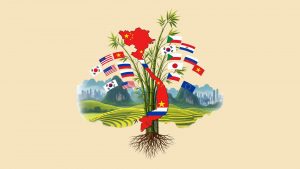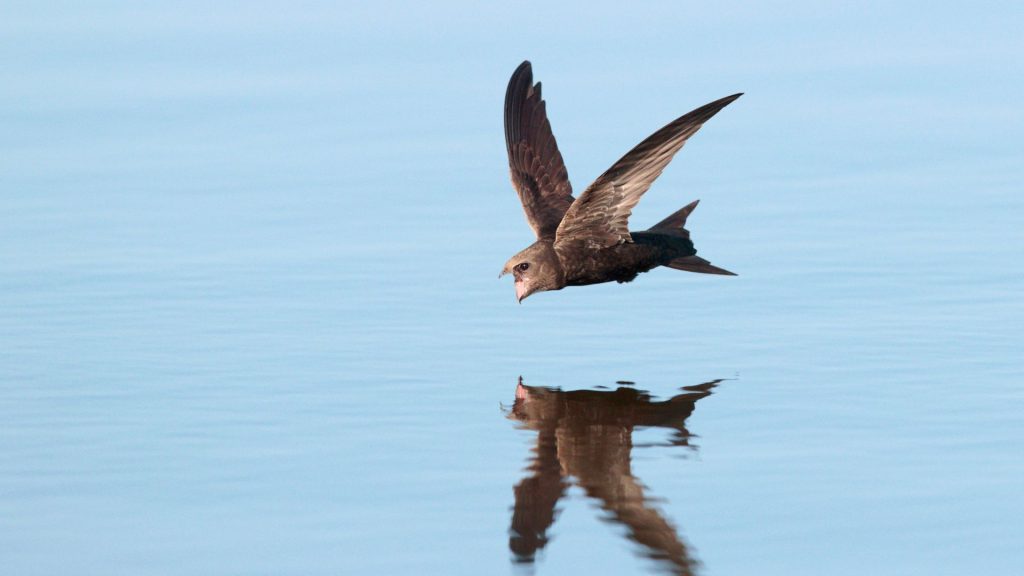Seira also explored Scottish-Arctic connections in her 2022 op-ed
With the seeming foreignness of disciplines like glaciology and mountain studies, one might be surprised to learn that mountains cover roughly a quarter of the Earth’s land surface1 and have significant impacts on environmental and human well-being. The Grampian Mountains alone cover close to half of Scotland’s land area2. Likewise, according to the Ministry of Land, Infrastructure, Transport and Tourism in Japan, ‘three-fourths of the national land is mountains’3, the tallest being Mount Fuji which straddles the prefectures of Yamanashi and Shizuoka (pictured). What are some of the human dimensions of mountains and ice, and how might their relevance increase in the years to come?
Education and research
Since 2004, the Centre for Mountain Studies at the University of the Highlands and Islands in Perth, Scotland has been offering an MSc in Sustainable Mountain Development remotely4. One of the core modules is Environmental and social issues in mountain areas. Similarly, four Japanese universities came together in 2017 to establish an interdisciplinary master’s in Mountain Studies5 that requires the completion of geological, biological and anthropological courses6. In an era of rapid environmental changes, institutions are starting to realise the growing importance of interdisciplinarity and cross-border cooperation in mountain studies.
As historian of science Dani Inkpen explains, ‘mountains and ice are co-constitutive’ and mountains ‘bring the cryosphere into close contact with human life’7. In the introductory chapter of Ice humanities: living, working, and thinking in a melting world (2022), geographer Klaus Dodds and environmental historian Sverker Sörlin write that ice humanities is:
an emerging interdisciplinary field of inquiry that bestrides many academic disciplines ranging from environmental history, geography, maritime and polar studies, glaciology, anthropology, and permafrost science, as well as science and technology studies exploring low temperatures and ‘life on and with ice’.8
Especially against the backdrop of a warming climate, mountains and ice can have personal, as well as political, significance. Landscape changes, including climatically-induced ones, are associated with emotions like solastalgia, eco-anxiety and eco-grief (solastalgia can be defined as ‘the pain or sickness caused by the loss or lack of solace and the sense of isolation connected to the present state of one’s home and territory’9). Not only does climate change influence the psychological well-being of local communities, but a melting cryosphere can also lead to changes in natural borders.
Scotland and the Poles
Over the past few years, Scotland has established new connections with Arctic countries. For instance, in 2019, the Scottish government announced its endeavour to serve as a ‘European gateway to the Arctic’10 and nine Scottish universities – Glasgow Caledonian University, Glasgow School of Art, Heriot-Watt University, Robert Gordon University and the University of Aberdeen, the University of Edinburgh, the University of St Andrews, the University of Strathclyde and the University of the Highlands and Islands – are now members of the University of the Arctic (UArctic), a network of institutions interested in northern research.
Among researchers studying northern environments, the idea of identifying linkages among the Arctic and Asia is gaining momentum. A case in point is the Third Pole – Himalaya Process11 which has its roots in a workshop held over ten years ago in Reykjavík, the Icelandic capital. There is also the Scottish Arctic Network12 at UArctic, which was established only a year ago, and the very first inter-polar conference13 ‘connecting the Arctic with the Third Pole’ which will be held later this year in Kathmandu, Nepal.
Can Scotland’s interest in the Arctic translate to a strengthened relationship with Asia’s cryosphere (‘regions on Earth where water freezes into snow or ice’14)? Asia is home to numerous mountain ranges from the Altai in the east to the Caucasus in the west. The Third Pole in Asia, which has thousands of glaciers, impacts a quarter of the world’s population15.
Evidently, the prevailing notion that alpine environments have minimal connections with humanity must be revisited. One way to achieve this is for more university programmes and research projects to address the societal impacts of a melting cryosphere and, given the universality of our changing climate, international cooperation and knowledge-exchange opportunities might just make all the difference.
References
1 Mountain Research Initiative. (n.d.) ‘Why mountains matter’. https://mountainresearchinitiative.org/who-we-are/why-mountains-matter
2 Cairngorms National Park. (n.d.) ‘The mountains’. https://cairngorms.co.uk/discover-explore/landscapes-scenery/the-mountains
3 Ministry of Land, Infrastructure, Transport and Tourism. ‘Land and climate of Japan’. https://www.mlit.go.jp/river/basic_info/english/land.html
4 University of the Highlands and Islands. (n.d.) https://www.perth.uhi.ac.uk/subject-areas/centre-for-mountain-studies/
5 University of Tsukuba. (n.d.) ‘Program overview’. https://mountain-studies.tsukuba.ac.jp/en/en-program/
6 University of Tsukuba. (n.d.) ‘Curriculum’. https://mountain-studies.tsukuba.ac.jp/en/en-program/en-curriculum/
7 Inkpen, D. (2022) ‘Ever higher: the mountain cryosphere’, in (eds.) K. Dodds & S. Sörlin, Ice humanities: living, working, and thinking in a melting world. Manchester University Press, pp.72-88.
8 Dodds, K. & Sörlin, S. (2022) ‘Ice humanities: living, working, and thinking in a melting world’, in Ice humanities: living, working, and thinking in a melting world. Manchester University Press, pp.1-34.
9 Albrecht, G. (2005) ‘Solastalgia: a new concept in human health and identity’. Philosophy Activism Nature, Vol. 3, pp.41-55.
10 Scottish Government. (2019) ‘Arctic Connections: Scotland’s Arctic policy framework’. Available: https://www.gov.scot/publications/arctic-connections-scotlands-arctic-policy-framework/pages/2/
11 Arctic Circle. (n.d.) ‘The process’. https://www.arcticcircle.org/third-pole-himalaya-the-process
12 University of the Arctic. (2023) ‘Scottish Arctic Network established as a UArctic Regional Centre’. https://www.uarctic.org/news/2023/3/scottish-arctic-network-established-as-a-uarctic-regional-centre/
13 University of the Arctic. (2023) ‘The first inter-polar conference: connecting the Arctic with the Third Pole’. https://www.uarctic.org/news/2023/4/the-first-inter-polar-conference-connecting-the-arctic-with-the-third-pole/
14 National Snow and Ice Data Center. (n.d.) ‘What is the cryosphere?’. https://nsidc.org/learn/what-cryosphere
15 Arctic Portal. (2021) ‘A virtual dialogue with experts on the Third Pole – Himalaya’. https://arcticportal.org/ap-library/announcements/2729-a-virtual-dialogue-with-experts-on-the-third-pole-himalaya
- Seira Duncanhttps://asiascot.com/author/seira-duncan
- Seira Duncanhttps://asiascot.com/author/seira-duncan





